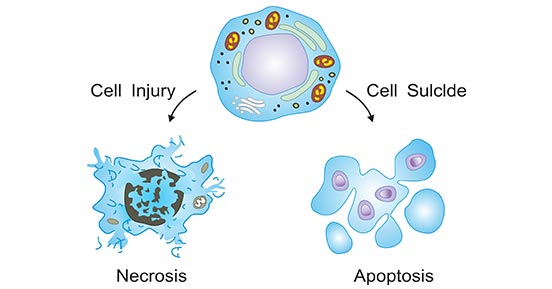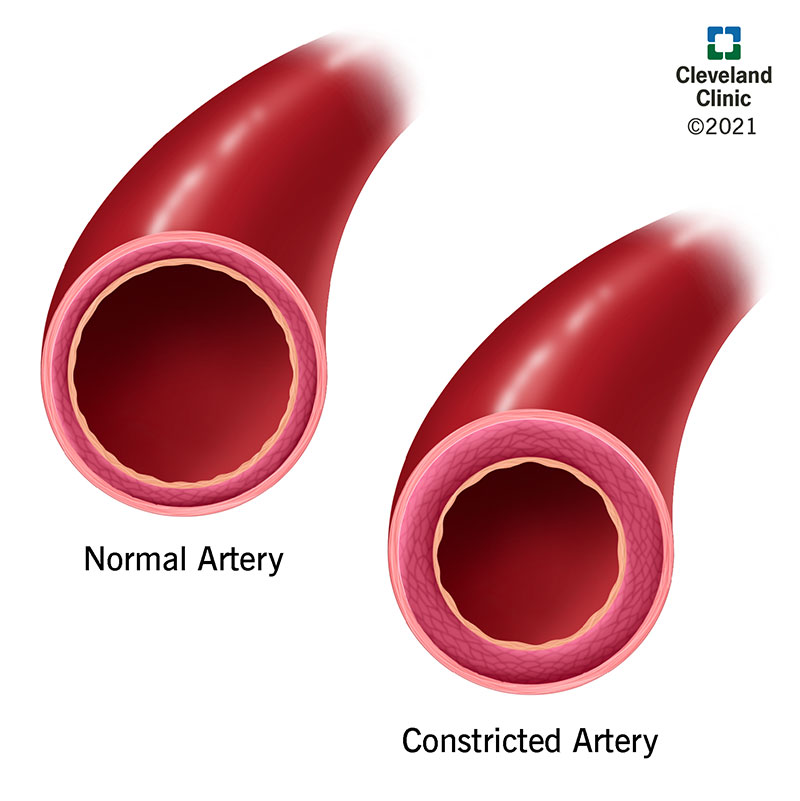What is the process that results in cellular death?
Atrophy.
Proliferation.
Mutation.
Death.
The Correct Answer is D
Choice A: Atrophy
Atrophy refers to the reduction in size or wasting away of an organ or tissue due to a decrease in cell size or number. This can occur due to various reasons such as disuse, lack of nutrition, or loss of nerve supply. While atrophy involves the shrinkage of cells, it does not directly result in cellular death. Instead, it is a form of cellular adaptation to adverse conditions.
Choice B: Proliferation
Proliferation is the process by which cells grow and divide to produce more cells. This process is essential for growth, development, and tissue repair. Proliferation leads to an increase in the number of cells and is the opposite of cellular death. It is a tightly regulated process that ensures the maintenance and regeneration of tissues.
Choice C: Mutation
Mutation refers to changes in the DNA sequence of a cell. These changes can occur due to errors during DNA replication, exposure to radiation, or chemical mutagens. While mutations can lead to various outcomes, including cancer, they do not directly cause cellular death. Instead, mutations can alter the function of genes and proteins, potentially leading to uncontrolled cell growth or other cellular dysfunctions.
Choice D: Death
Apoptosis is a form of programmed cell death that occurs in multicellular organisms. It is a highly regulated process that allows the body to remove damaged or unnecessary cells without causing harm to surrounding tissues. Apoptosis involves a series of biochemical events leading to characteristic cell changes and eventual death. This process is crucial for maintaining cellular homeostasis and preventing the development of diseases such as cancer.

Nursing Test Bank
Naxlex Comprehensive Predictor Exams
Related Questions
Correct Answer is D
Explanation
Choice A: Minimal Effect on Vessels
A reduction in blood pH, which indicates acidosis, does not have a minimal effect on blood vessels. Acidosis can significantly impact vascular tone and function. Therefore, this choice is incorrect as it underestimates the physiological changes that occur in response to a decrease in pH.
Choice B: No Effect on Vessels
Similarly, stating that a reduction in blood pH has no effect on vessels is inaccurate. Blood pH is tightly regulated, and deviations from the normal range (7.35-7.45) can lead to significant physiological responses. Acidosis can alter vascular tone, making this choice incorrect.
Choice C: Vasodilation
While vasodilation can occur in response to certain conditions, a reduction in blood pH typically leads to vasoconstriction rather than vasodilation. Vasodilation is more commonly associated with an increase in blood pH (alkalosis) or other factors such as increased levels of nitric oxide or prostaglandins.
Choice D: Vasoconstriction
When the pH of blood reduces, indicating acidosis, it often leads to vasoconstriction. This response is mediated by chemoreceptors that detect changes in pH and stimulate the vasomotor center to increase vascular tone. Vasoconstriction helps to maintain blood pressure and ensure adequate perfusion of vital organs during acidosis. Therefore, this is the correct answer.

Correct Answer is B
Explanation
Choice A: Beta 2 Agonist Decreases Blood Pressure
Beta 2 agonists primarily cause bronchodilation and vasodilation, which can lead to a decrease in blood pressure. However, this is not their primary function, and they are more commonly associated with the relaxation of smooth muscles in the airways.
Choice B: Beta 1 Agonist Increases Blood Pressure
Beta 1 receptors are primarily located in the heart. Activation of these receptors increases heart rate and contractility, which in turn increases cardiac output and blood pressure. Therefore, beta 1 agonists are known to increase blood pressure.
Choice C: Beta 2 Agonist Reduces Blood Pressure
Similar to choice A, beta 2 agonists can cause vasodilation, which may reduce blood pressure. However, this is not their primary therapeutic use, and they are mainly used for their bronchodilatory effects.
Choice D: Beta 1 Agonist Reduces Blood Pressure
Beta 1 agonists increase heart rate and contractility, leading to an increase in blood pressure. Therefore, this statement is incorrect as beta 1 agonists do not reduce blood pressure.
Whether you are a student looking to ace your exams or a practicing nurse seeking to enhance your expertise , our nursing education contents will empower you with the confidence and competence to make a difference in the lives of patients and become a respected leader in the healthcare field.
Visit Naxlex, invest in your future and unlock endless possibilities with our unparalleled nursing education contents today
Report Wrong Answer on the Current Question
Do you disagree with the answer? If yes, what is your expected answer? Explain.
Kindly be descriptive with the issue you are facing.
